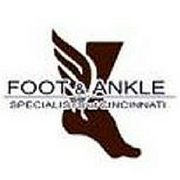Is Your Heel Pain Caused by Plantar Fasciitis or Heel Spurs?

Heel spurs and plantar fasciitis are common conditions that can both produce chronic heel pain, which interferes with daily activity and comfort. To begin treating symptoms, here’s what you need to know about these conditions and what causes them.
Plantar Fasciitis
What Is It?
The plantar fascia ligament is a short, weblike band of flexible muscle fibers connecting the heel to the front of your foot. When you injure this ligament, it causes inflammation, which in turn can create pain and stiffness. This condition is called plantar fasciitis, which can last for several months to over a year. Without treatment, plantar fasciitis might worsen and require corrective surgery.
What Are Potential Causes?
Several factors can cause plantar fasciitis, including:
- Standing for long periods
- Overexertion
- Wearing shoes without arch support, such as flip-flops
- Other forms of trauma or injury
What Are Common Symptoms?
You might have plantar fasciitis if you experience:
- Sharp pain in your feet or heel that’s worse in the morning and improves throughout the day as the ligament stretches
- Visible redness and swelling on the bottom of the foot
Heel Spurs
Over time, untreated plantar fasciitis can produce heel spurs, which are small calcium protrusions beneath the heel bone. These growths are sharp and hard, and they can damage the pads of the feet when standing or walking. When heel spurs cut into the fatty connective tissue beneath your heel, it can be painful—some people might even see the protrusion on the bottom of their foot.
Although plantar fasciitis can cause heel spurs to develop, these protrusions don’t always cause symptoms. About half of all patients with heel spurs don’t feel them or know they exist.
Treating Plantar Fasciitis & Heel Spurs
 While you should always see a podiatrist for treatment, here are a few potential remedies to try:
While you should always see a podiatrist for treatment, here are a few potential remedies to try:
- Stretching Exercises: For example, lunge toward a wall and stretch the back leg to loosen the calf muscles and plantar fascia ligament.
-
Medication: Take over-the-counter pain medication. Follow the dosing instructions carefully, and don’t take more than one type of non-steroidal anti-inflammatory drug (NSAID) at a time.
-
Rest: This can help reduce the strain on your ligaments from overexertion.
-
Shoe Support: Wear custom supportive shoes or orthotics from your physician.
-
Medical Intervention: If the previous methods don’t relieve symptoms, your doctor might administer an injection to reduce inflammation or schedule surgery to repair ligament damage or remove calcium deposits.
If you have heel pain, talk to a doctor at Foot & Ankle Specialists in Blue Ash, OH. There’s no reason to continue to suffer from heel pain and limited mobility, and delaying treatment could worsen the condition. To make an appointment with a board-certified podiatrist, call (513) 769-4408. Visit the physicians online to learn more about the conditions they treat.
About the Business
Have a question? Ask the experts!
Send your question

